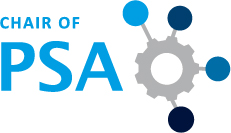Scientific news ticker november 2016
Distributed security and dependability control
November 2016 Smart distributed manufacturing systems, consist of a large number of widely dispersed loosely-coupled yet collaborating heterogeneous components, that are vastly connected to and communicating with cyber space. On the one hand, these properties can afford manufacturing enterprises a plethora of opportunities and strategic advantages, on the other hand however, such vast dispersity and exposure to cyber space, raises major vulnerabilities and security issues that should be carefully dealt with. Therefore, in order to harness all the capabilities of such systems, it must be assured that the system is implemented and runs dependably and securely.
The model consists of firstly, a core, with information about the component’s objectives, task description, structure, context, etc. and risk model to find possible vulnerabilities, assessing them, and providing countermeasures. Secondly, the model possess a control loop in connection to the core that does the process of inspection and reaction as shown below. The structure and collaboration of the components of Dependability and Security Model are shown in the above figure. Sensed data through sensors are sent to the VO (virtual object) which is the cyber representative or digital twin of the component (e.g. industry 4.0 component). Then these data are filtered, monitored, and at the same time this stage is being fed by status/topology manager to gain the approved context to compare the filtered sensed data with, to find anomalies. When detected, info is sent to the level one analyser where in collaboration with assessment agent and database, the risk will be identified and measured. Then risk data will be sent to decision making agent (DM level one) to decide on the right actions, alarms, and reconfiguration if necessary, and send the command to right actuators. However, if the problem was not simple, and required more advanced analysis, it will be sent to analyser level two, where harder problems can be analysed and negotiations with other agents might be necessary to come up with the right measurements and analysis to provide accurate data for DM level 2. In decision making level two, more complex actions, and if required, negotiations with other components (e.g. for sharing resources in fixing an issue), take place. After the actions are carried on, and issue is confirmed to be solved, the feedback goes to the core model to update the risk assessor.
Contact: o. Prof. Dr.-Ing. Hermann Kühnle






